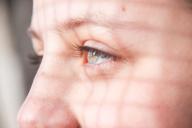When you get your first dog, then everything about its health and growth can be surprising and exciting to watch.
The same goes with your puppy changing its teeth, because it can be quite unusual and interesting.
Here's how it usually happens for healthy dogs.
Baby Teeth (Milk Teeth)
When puppies are very young, they have tiny, sharp baby teeth, just like human babies. These help them chew soft puppy food.
Teething Time
As puppies grow, their baby teeth start to feel a bit uncomfortable. That's when they begin teething, a bit like when babies get new teeth.

To soothe the discomfort, puppies may chew on things.
Adult Teeth Arrival
Around four to six months old, puppies' adult teeth begin to push out the baby teeth. It's like a changing of the guard in their mouths!
Chewy Phase
During this time, you might find puppy teeth lying around, and they might chew a lot. Chewing helps the new teeth come in properly.
Adult Teeth Settling In
Once all the adult teeth are in, puppies have a set of stronger, more durable teeth. It's like getting a brand new set of tools for eating and playing.
Visit the Vet
Sometimes, a vet might check to make sure everything's going smoothly.
They may remove any stubborn baby teeth or give advice on keeping those new teeth healthy.
Chewing Benefits
Chewing isn't just for comfort during teething; it helps keep the teeth clean and healthy throughout their lives.
Enjoying Strong Teeth
After all this growing and changing, puppies have a set of strong adult teeth, and they're ready for a lifetime of playful chewing and happy smiles!









